
Securing Your Financial Data: A Guide to Encrypting Excel Files
In a world where data breaches are becoming more common, protecting your financial data and confidential business information is more critical than ever. Excel spreadsheets, often containing sensitive records like financial reports, client data, or proprietary business plans, are a prime target for unauthorized access. This overview brought to you by the security experts at NewSoftwares.net, will show you how to effortlessly encrypt an Excel file using Folder Lock, an intuitive and powerful tool that turns a complex task into a simple, secure process.
Why Encrypting an Excel File is a Smart Move
Encrypting your Excel files is one of the most effective ways to safeguard the privacy and security of your documents. This simple step provides a powerful shield against data leaks. Encrypted spreadsheets are used across many industries and for countless reasons, including:
- Financial Services: Protecting tax documents, client financial data, and bank records.
- Legal Firms: Securing confidential case files, contracts, and legal agreements.
- Healthcare: Ensuring the confidentiality of patient billing records and health data.
- Corporate Business: Shielding strategic financial documents, compensation data, and business forecasts.
The Right Tool for the Job: Online vs. Offline Encryption
When it comes to encrypting an Excel file, you have two main options: using an online service or an offline application. The choice is clear when privacy is your top priority.
Online Encryption Services
These are web-based tools that promise quick and easy encryption.- Pros: They are convenient and require no downloads. Many offer basic free services.
- Cons: This convenience comes at a significant cost to your privacy. To work, these services require you to upload your sensitive files to their servers, meaning your confidential data is in a third-party's cloud—a security risk you cannot control.
Offline Software
Offline tools are applications you install directly on your computer.- Pros: They are far more secure, as your file never leaves your machine. They function without an internet connection, and you have complete control over the entire process.
- Cons: These robust tools typically come with a cost and require a one-time download and installation.
Encrypting Your Excel File with Folder Lock: A Simple, Secure Method
The easiest and most reliable way to encrypt an Excel file is by using a dedicated security tool like Folder Lock. Its method is both simple and powerful, using a secure, virtual drive that handles all the encryption for you.
Pre-Requisite
You need to install the Folder Lock application. If you have not installed it yet, you can read How to Download, Install, and Get Started with Folder Lock.Method 1: The Quick Drag-and-Drop Method
This is the fastest way to get a Excel file into a secure encrypted container. It's a lifesaver when you're in a hurry.Step 1: Open Folder Lock and Your Locker
- Launch the Folder Lock application and enter your master password.
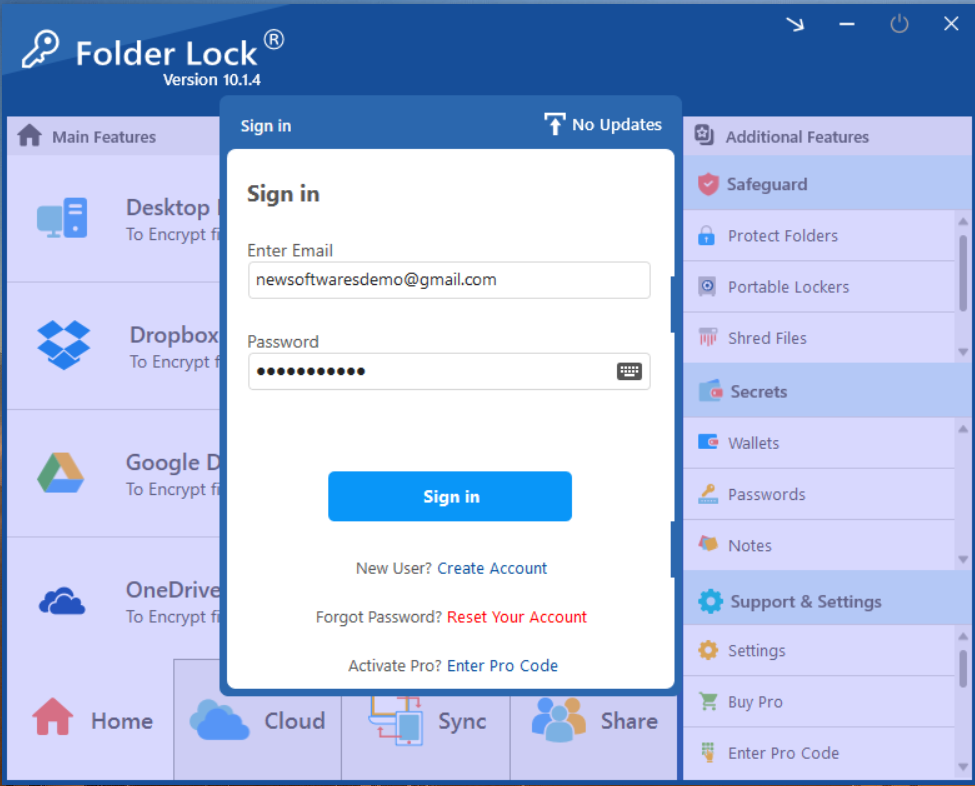
- On the main screen, find the "Desktop Locker" section. If your locker isn't open, click the "Open" button next to it. Your Desktop Locker will open in a new window.
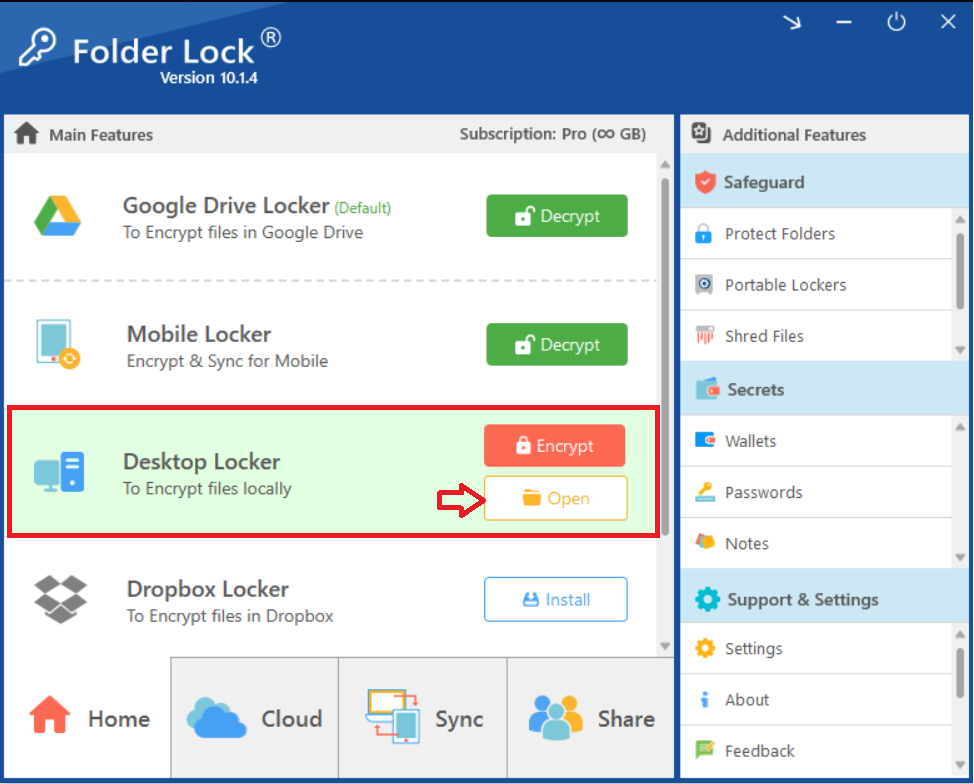
- Clicking on Open will open your Desktop Locker in Windows File explorer as shown in below screenshot.
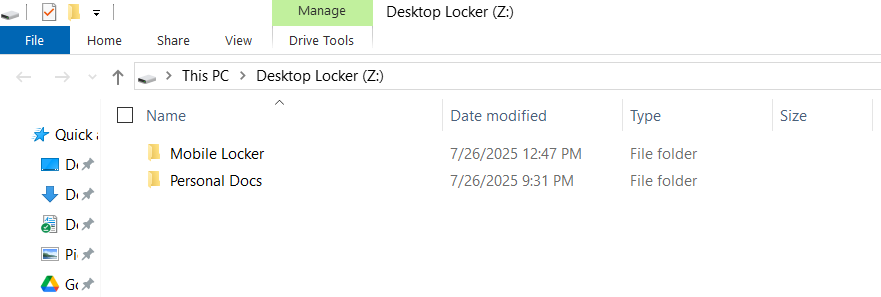
Step 2: Move Your Excel File into the Locker
- Find the Excel file on your computer that you want to protect. Drag the file and drop it directly into the opened Desktop Locker window.

Step 3: Encrypt Your Locker
Once you have moved your Excel sheet inside, return to the main Folder Lock application window. Click the "Encrypt" button next to the Desktop Locker. This action will hide the locker and secure all files inside, including your Excel sheet.

Alternate Method : Protecting via Safeguard Tab of Folder Lock
Step 1: Open Folder Lock
- Launch the Folder Lock application on your computer and log in with your email and password.
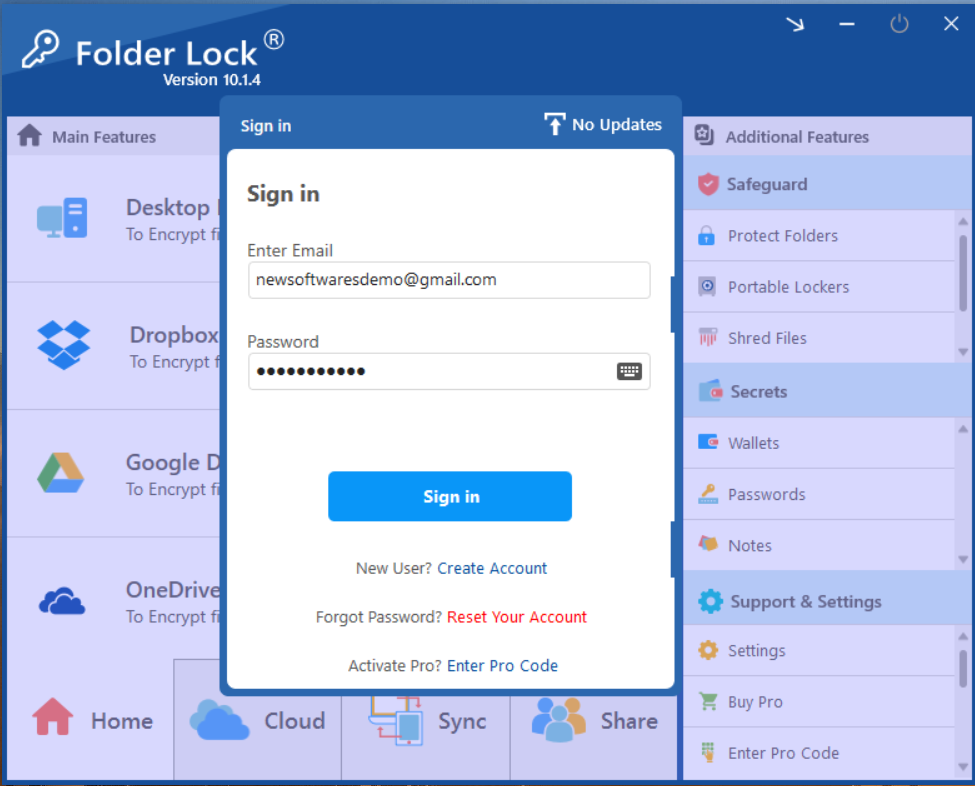
Step 2: Select "Protect Folders Under Safeguard Tab"
- Within the Safeguard section, click on the "Protect Folders" tab. This will open the interface for hiding your items.
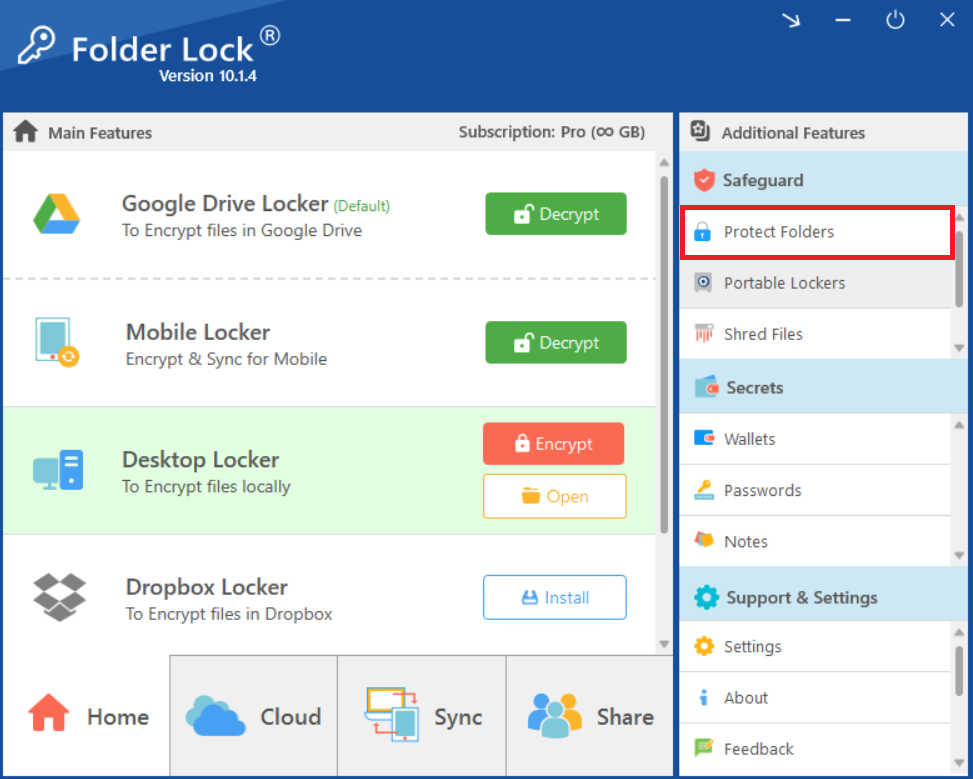
Step 3: Add Items to Lock
- In the "Protect Folders" view, click on the "Add Items to Lock" button at the top of the screen.

- A dropdown menu will appear. You can choose to add individual "File(s)","Folder(s)," or entire "Drive(s)" for protection. For Excel file protection we will be selecting "Add Files".

- Click on "Add File" to browse and select your Excel file.
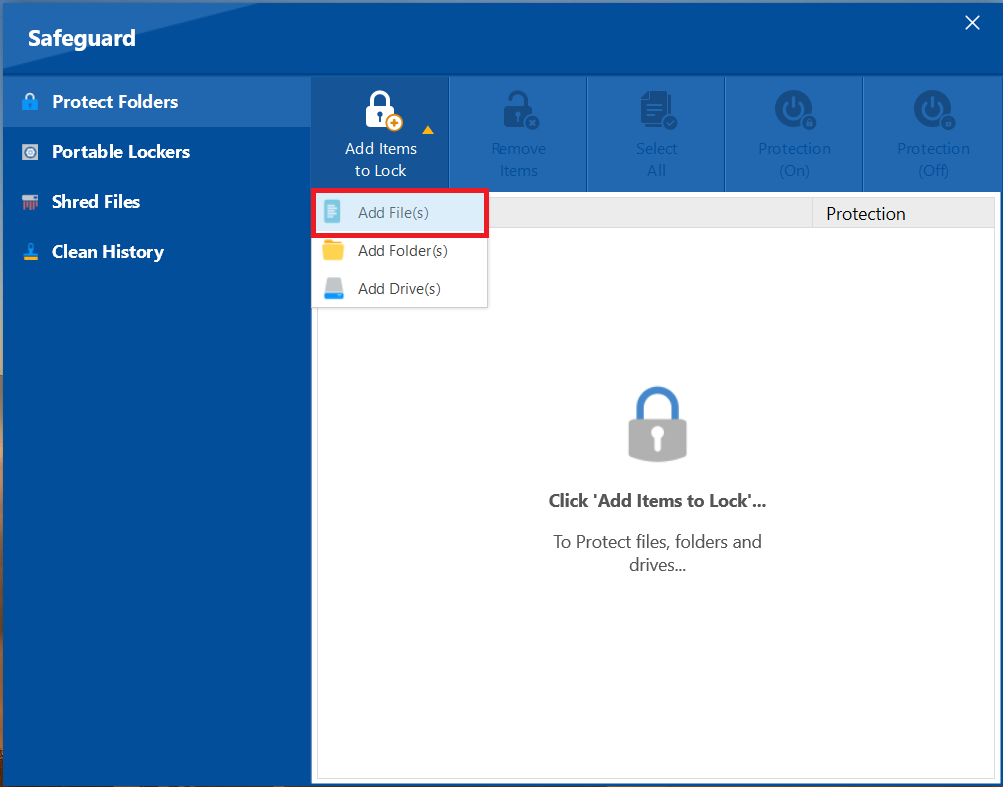
- From the browse menu select your desired Excel file from its location. After successfull addition of your selected Excel Sheet, your selected ones will appear as shown in below screenshot.
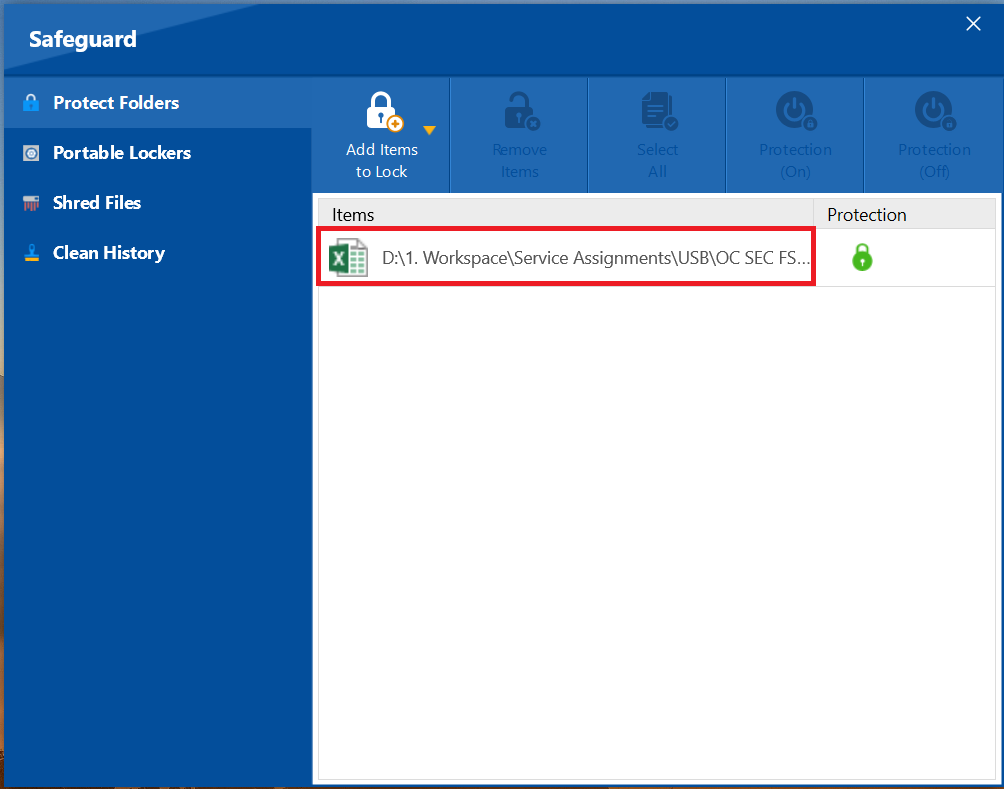
Step 4: Confirm Protection Status
- A green lock icon under the "Protection" column indicates that the item has been successfully protected and is now hidden.
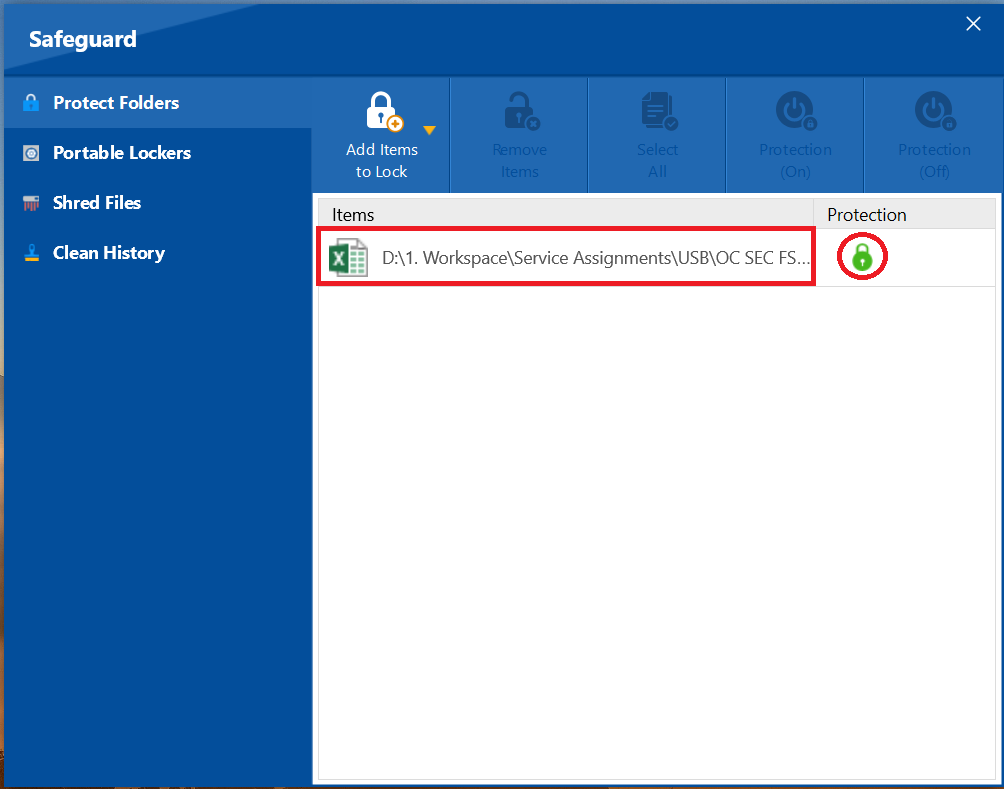
FAQs
Q: Can I open an Excel file that was encrypted with Folder Lock using other software?
A: No. Files encrypted with Folder Lock use a proprietary, secure format. To ensure your data remains completely secure, the recipient must also have Folder Lock installed to open the file with the correct password.
Q: What is the difference between encrypting an Excel file and simply password-protecting it with built-in Excel tools?
A: Built-in password protection offered by Excel is often a weaker form of encryption that can be easily bypassed by common cracking tools. Folder Lock uses military-grade AES 256-bit encryption, providing a much higher level of security that is extremely difficult to breach.
Q: Will encrypting a large Excel file take a long time?
A: No. Folder Lock's encryption engine is highly optimized for speed. While the time may vary depending on the file size, the process is designed to be fast and efficient, allowing you to secure even large spreadsheets quickly.
Q: Is it safe to send an encrypted Excel file via email?
A: Yes. Since the file is already encrypted and password-protected, it is safe to send via email. Even if the email is intercepted, the data remains unreadable to anyone without the correct password and the Folder Lock application. You should always share the password through a separate, secure channel.
Q: What happens if I forget the password for my encrypted Excel file?
A: Folder Lock has a password recovery feature that can help you regain access. However, for maximum security, it's always recommended to use a strong, memorable password and consider using a secure password manager to store it.
By following these straightforward methods, you have taken a crucial step in protecting your digital privacy. Folder Lock's simple yet powerful approach ensures that your confidential archives are no longer vulnerable. You can now manage and share your sensitive files with confidence, knowing they are protected by a robust encryption standard that gives you complete peace of mind.
